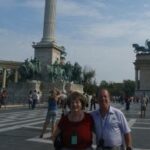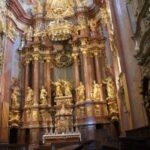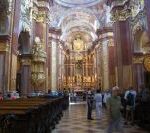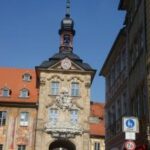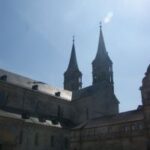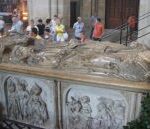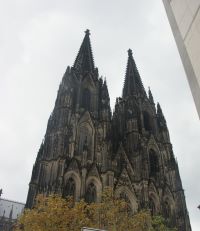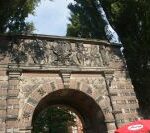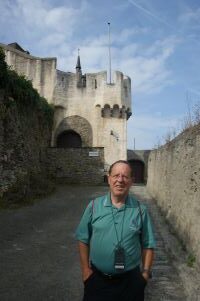Yes, the trip was good, though we are obviously out of our social class on the Tauck cruises (we aren’t retired, don’t have two homes, one of which is in Palm something or another, and get a steerage class cabin–they do unshackle us in the morning, though).
It was therapeutic for Carolyn to have to walk, though Brattberg told her yesterday he’s done as much for her as he can; her arthritis means she may have to have a knee replacement to get the range of motion back, and she’s had too many friends endure horror stories to think that’s a good idea.
She thinks that I think that since I’m there, I ought to use every minute doing–she’s right, and I did. She went on the tours, then returned to the ship. I stayed sometimes until just before sailing.
The bike helped get around–my first city outside of Amsterdam took me to a 1545 courtyard at one end of town, and a 12th century ruin at the other. A far cry from the Constitution Trail.
Not unusual was Budapest–I’d been there 3 times before, but had never spent time at the Castle (destroyed, as much of Europe was, in WWII–if not before). When the 2 hour tour went back to the boat (with Carolyn) I stayed, and in 4 1/2 hours visited five museums (it helped that the exhibits were mostly in Hungarian, which is almost impossible to guess, unlike most Romance languages!)–a Haydn in Hungary exhibit, a 15th century Synagogue, the National Military Museum, and two in the Castle itself–History and Art. What was especially neat was an ongoing folk festival, that had the feel of Ft. de Chartres, with costumes, food (my arteries still sense the presence of deep fried food), and crafts–woodworking, blacksmiths, clothing…etc.
As I said, Europe is cute, but partly because it’s not nice–walled cities are quaint, but they indicate you have neighbors who covet more than your wife. Our airforce did a heck of a job on many of the cities in WWII, but the rebuilding of the old parts is quite realistic, and Germany in particular is quite clean and picturesque!




